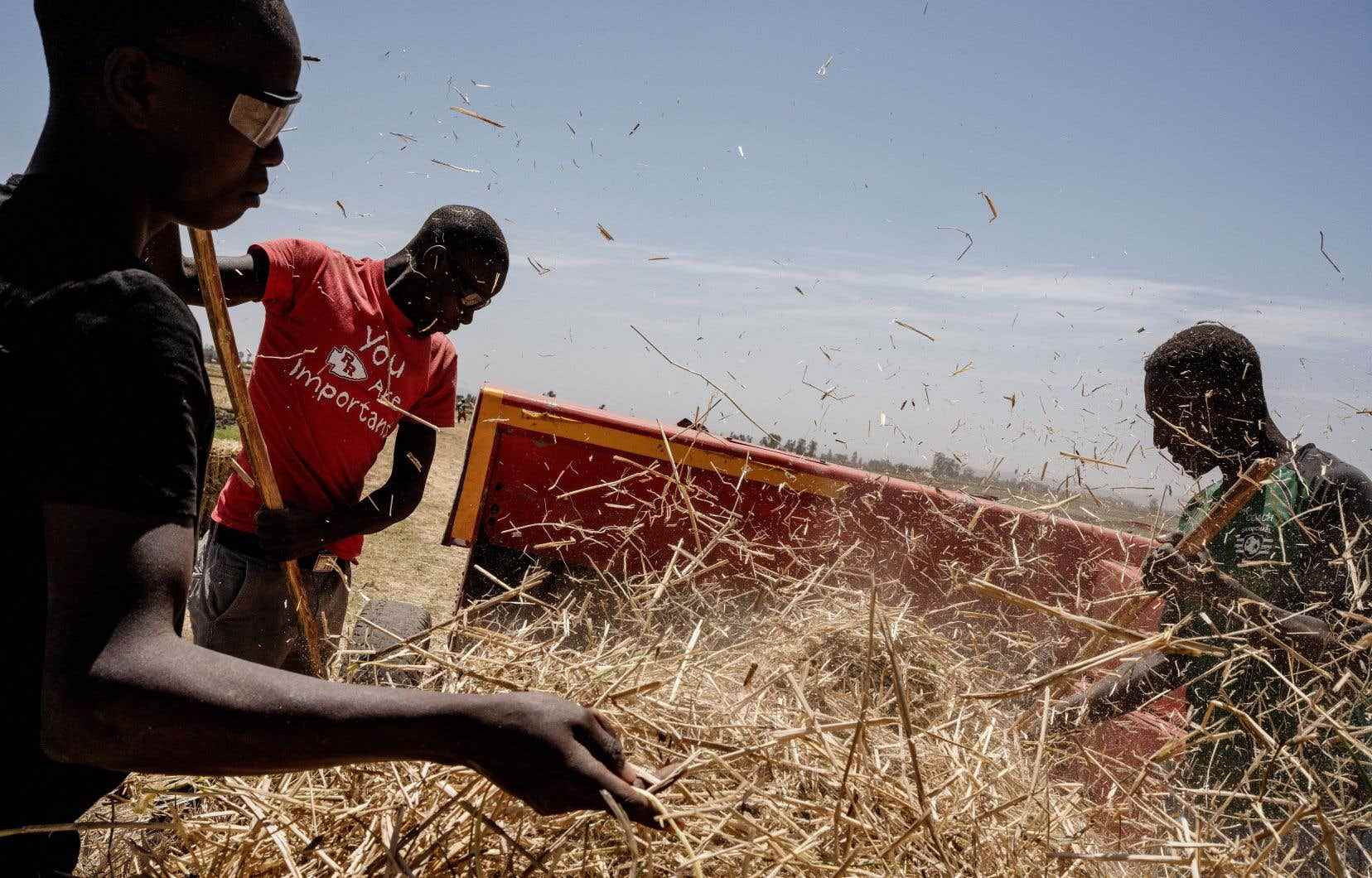The small rice field of Agastin Kangi, in Mwea, north of Nairobi in Kenya, is nearly 8,500 kilometers by car from kyiv, driving in a straight line. A ditch separates the two places. The war, however, has a profound impact on the farmer here, as on many other people around the world.
It’s on the wallet that it hurts: a bag of DAP fertilizer now sells for nearly 6,500 shillings, found The duty. The same bag cost 2,600 shillings in 2019, shows us, with supporting data, Evalyne Nyawira, daughter of an owner of three local stores.
“For people here, it’s a lot of money, it’s a big difference. Many cannot afford it, ”drops the 27-year-old woman. The steady stream of customers has dried up, with many farming less. The back of the store is almost empty, as bags piled on top of each other a few years ago. As a result, one of her mother’s stores will soon close.
The Kenyan government set up an emergency subsidy last fall, which has been renewed, to keep the price of a bag at 3,500 shillings. This could in theory benefit five million farmers at the beginning of the year, in view of the next harvest in July.
“This is the first time that I have needed government assistance,” comments Agastin Kangi, who has been a farmer for fifteen years and who is satisfied with the measure.
But this grant is far from solving everything, with access problems being reported across the country. A survey conducted in November by the Central Bank of Kenya (CBK) reveals that only 20% of farms had access to subsidized fertilizer.
“There are long queues, and the distribution points are far from my house. It makes me lose days of work, and transport is expensive, ”says Salesio Michen, in his sixties. While growing tomatoes, corn, beans, and rice on five acres of land, he reduced his production to one acre. “Several farmers I know put down their tools,” he says.
The price increase is felt throughout the region. Kennedy Kibet Kirui, who owns a machine to make rice straw bales on customer orders, points to a piece of land left abandoned. Its owner decided not to grow it because it was too expensive. Last year, he reports, business was even slower. “There was no work,” he blurts out.
Fertilizers are fundamental to having a good return on the land, and the situation raises questions about the country’s ability to produce enough to feed its population.
African dependent countries
Supply difficulties and high prices are causing fertilizer use to fall by 20% in 2022 on the African continent, explains Charlotte Hebebrand, director of communications and public affairs at the research group International Food Policy Research. Institute (IFPRI) and former leader of the International Fertilizer Association (IFA).
Kenya, like other African countries, relies heavily on fertilizer imports from Russia and China in particular, which imposed restrictions on its exports last year. The war in Ukraine has led to Western sanctions on Russia, a major exporter of potash, phosphate, ammonia and urea, the basis for fertilizers. Added to this are sanctions that target companies in Belarus involved in the production and trade of potash.
And even if there is some regional production, that is not enough, adds Charlotte Hebebrand. “When there is a shortage of fertilizer globally, it has a particular impact on these countries,” she says. The African market is smaller compared to India, China, Brazil or the United States. So when the global supply is limited, the bigger markets receive the products in priority, and the smaller markets become less interesting. »
The war in Ukraine has fueled an already difficult situation, with the rise in the price of fertilizer having started during the pandemic. Since May 2020, prices have risen by 230% globally, the researcher and a colleague calculated.
Local organic fertilizer takes off
Rising fertilizer prices, however, are encouraging local greener initiatives in Kenya. “The war in Ukraine really had an impact,” says Samual Rigu, co-founder of Safi Organics Limited, which produces organic fertilizer in Mwea.
It had 6,000 customers at the same date in 2022. Today, the farmers in the region who buy its fertilizer are nearly 10,000, attracted by its lower prices. Like David Irungu, who is satisfied to pay his bag nearly 2400 shillings.
“Our production is local, and the price remains the same for the farmers, who are otherwise victims of fluctuations caused by, for example, the war”, explains Samual Rigu.
The company does business with young people from surrounding local communities. These are trained to make biochar, a form of vegetable charcoal made from agricultural residues from nearby farms, which also acts as a carbon sink. The black powder is then bought by Safi Organics Limited, who make proper fertilizer out of it.
“The long-term impact with inorganic fertilizers is that it generates acidification of the soil,” says Samual Rigu. The soils in the region are already very acidified, which makes farming more difficult. “The benefit of our fertilizer is that it revitalizes the soil and reverses acidification, making the soil more fertile,” he says. This increases productivity by 30% for farmers. » The irrigation water required for cultivation is also reduced by 15%. He adds that limiting the use of traditional fertilizers reduces greenhouse gas emissions.
This report was financed thanks to the support of the Transat International Journalism Fund.The duty.
